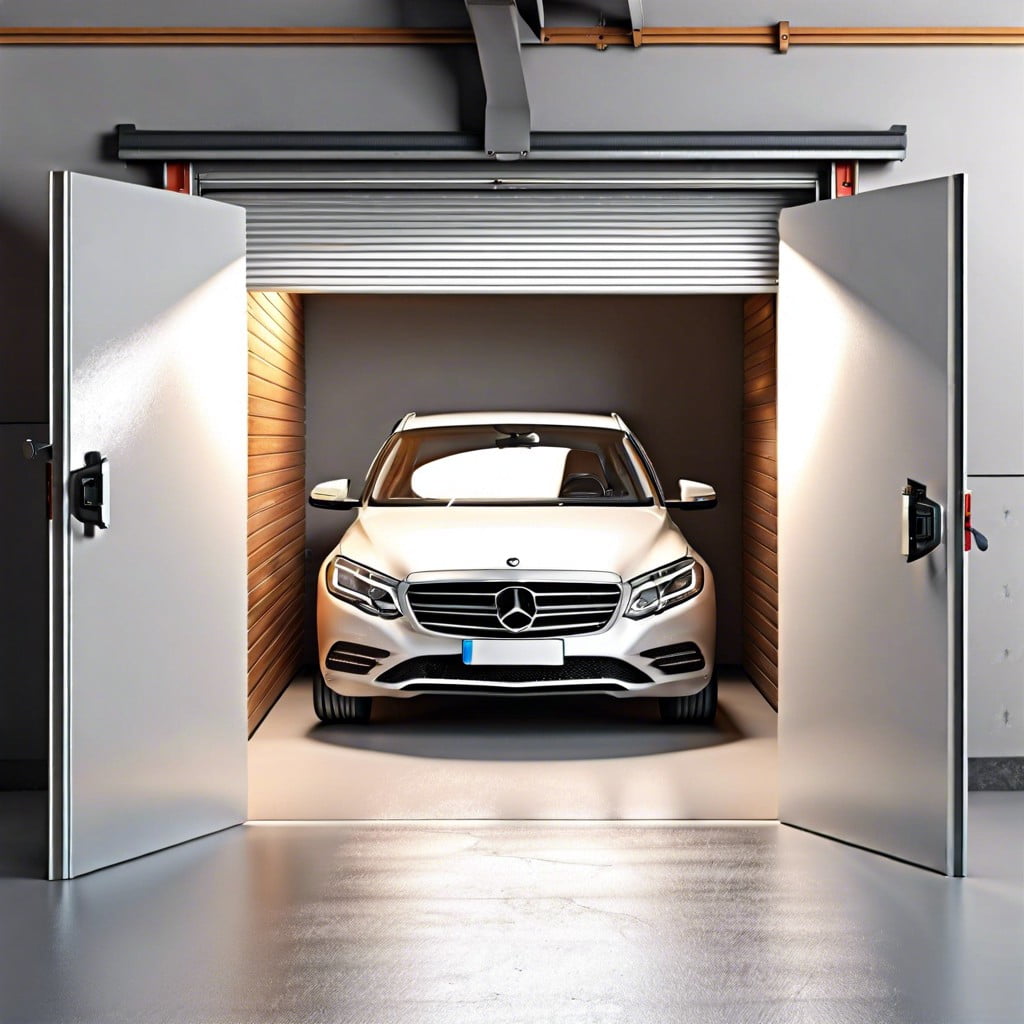Last updated on
Learn how to declutter your garage efficiently with simple steps and practical tips.
Key takeaways:
- Clear everything out and sort items into keep, donate, sell, or toss.
- Envision how you want to use your decluttered garage space.
- Throw out broken items and safely dispose of toxic materials.
- Organize big items first and make everything visible.
- Find an organizational system that works with shelving, hooks, and bins.
Table of Contents
Clear Everything Out

Start your garage decluttering adventure by removing all items from the space. Seeing the garage empty provides a clear vision of what you’re working with and allows you to spot issues like dirt or damage that might have been lurking behind that old tennis racket and various unidentifiable objects.
Sort items into groups as you take them out: keep, donate, sell, or toss. This is a great time to make tough decisions—like finally parting with the broken lamp you’ve moved from one corner to another with hopes of someday repairing it.
Keep a cleaning kit handy, so you can wipe down shelves and sweep the floors once everything’s out. An empty, clean garage not only sparks joy but also prevents dirt from moving back in with the items you decide to keep.
By the end of this phase, you’re set with only the things you need, fresh space, and, probably a bit of nostalgia for the memories unearthed from those hidden garage corners!
Decide How You Want To Use Your Garage Once It Is Decluttered
Before you start tossing and boxing items, envision your ideal garage space. Here are some common uses to help guide your vision:
– Vehicle parking: A novel idea, perhaps, but aiming to actually park your car in the garage could steer decision-making about how much to keep.
– Workshop: Whether for carpentry, painting, or other creative endeavors, defining a zone with easy access to tools and work surfaces can enhance your productivity.
– Home gym: Consider allocating space for exercise equipment you’ll actually use. Remember, a treadmill doubles as a fine clothes hanger, until you declutter.
– Storage heaven: Plan to store seasonal items, sports equipment, and outdoor gear efficiently. Think vertical storage solutions to maximize space.
Each purpose will influence what stays, what goes, and how the garage should be organized. Prioritize functionality to match your lifestyle needs.
Throw Out Trash and Manage Toxic Materials
The perfect garage makeover begins with a simple rule: if it’s broken or no longer serves a purpose, it’s time to say goodbye. Separate items into piles designated for recycling, donating, or trashing. Start with anything that no longer works—like that old paint sprayer you swore you’d fix.
Handle hazardous materials with care. Old paint cans, solvents, and chemicals shouldn’t just be tossed in the trash. Check local waste management protocols to ensure you’re disposing of these items safely. This not only helps protect the environment but also prevents potential hazards from lingering in your space.
By removing what you don’t need, you create a fresher, safer space that’s ready for improvement.
Organize Big Items First and Make Everything Visible
Start with the heavy lifters of clutter, like lawnmowers and bikes. Getting these bulkier items sorted first creates more floor space and makes the smaller tidying tasks feel less daunting. Use clear, stackable bins for visibility and label everything. This not only saves you from playing a guessing game each time you need something but also prevents items from becoming future clutter candidates. Hang tools on the wall instead of shoving them in drawers. This not only makes them easy to find but also turns your garage walls into a functional display of organizational prowess. Prioritize everyday items by storing them at eye level or in easier-to-reach spots, ensuring less-used items don’t hide the essentials. Remember, if you can see it, you can access it, and if it’s easy to access, it’s harder to ignore.
Find An Organizational System That Works
Once your garage space is stripped to the bare bones and the major items are placed, it’s time to bring in the big guns of organization: shelving units, hooks, and bins. Embrace vertical storage to save critical floor space—think wall-mounted shelves for everything from garden tools to sports equipment. For smaller items like screws and nails, a pegboard can be a game-changer, allowing for easy access and at-a-glance inventory.
Labeling can’t be overemphasized. Clear, bold labels prevent the sin of double-purchasing and the headache of rummaging through unmarked bins during every project. Consider transparent bins for immediate visibility, supplemented by labels for a quick understanding of each container’s contents.
Finally, for frequently used items, keep them within arm’s reach. Establish a zone near the door for these essentials, perhaps adding a magnetic tool strip or a small shelving unit. This arrangement minimizes clutter as it discourages piling and promotes returning items to their rightful places post-use.




